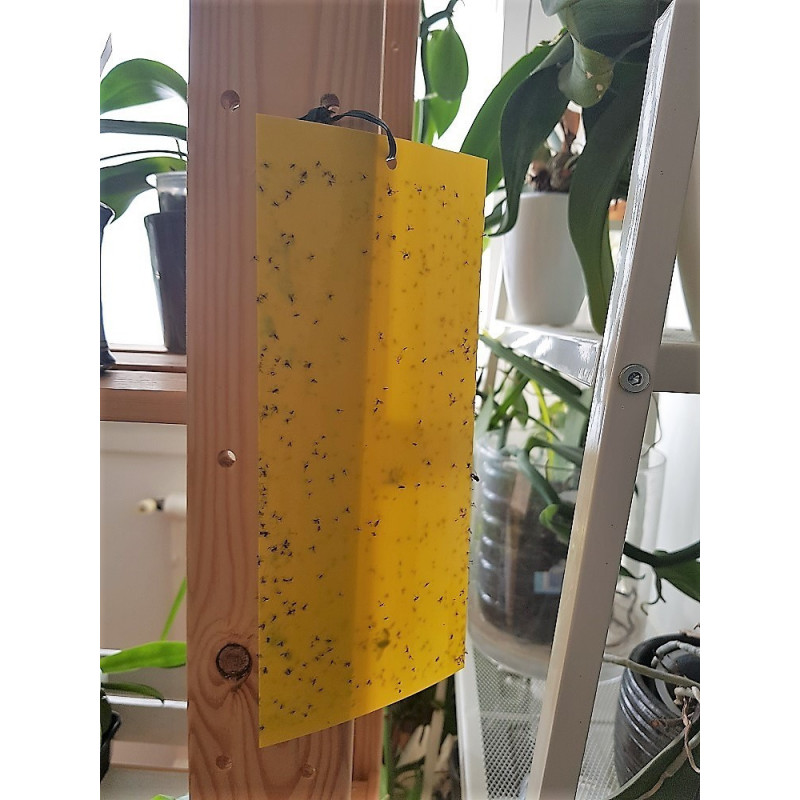



Double-sided yellow sticky traps are used to safeguard greenhouse and indoor plants from infestations of whiteflies (aleurodes), thrips, aphids, fungus gnats, and rhododendron cicadas. The intense yellow color is highly attractive to insects.
Double-Sided Yellow Sticky Trap for Whiteflies, Thrips, Aphids, Fungus Gnats, and Rhododendron Cicadas
Double-sided yellow sticky traps are used to safeguard greenhouse and indoor plants from infestations of whiteflies (aleurodes), thrips, aphids, fungus gnats, and rhododendron cicadas. The intense yellow color is highly attractive to insects. They are subsequently trapped by the adhesive and unable to free themselves from the traps.
The sticky trap can also serve as a platform for specific pheromones targeting certain pests. Here's how to use double-sided yellow sticky traps to protect your plants:
Strategic Placement: Position the double-sided yellow sticky traps near areas where pests are prevalent. Hang them at various heights to attract a range of flying insects.
Monitoring and Identification: These traps also function as a monitoring tool. By examining the trapped insects, you can pinpoint the specific pests affecting your plants.
Regular Rotation: To maintain trap efficacy, replace them regularly, especially when they become saturated with insects or covered in dust.
Compatibility with Other Methods: Double-sided yellow sticky traps can complement other integrated pest management techniques, such as pruning infested plant parts, applying horticultural oils or insecticidal soap, and encouraging an environment conducive to natural predators.
Environmental Protection: Double-sided yellow sticky traps provide an environmentally friendly alternative, reducing the need for excessive use of potentially harmful chemicals.
By incorporating double-sided yellow sticky traps into your plant protection strategy, you promote a natural balance in your garden and contribute to maintaining the health of your plants while minimizing the impact on the environment.
Caution with Sensitive Plants: Some plants may be sensitive to the adhesive on sticky traps. Be sure to test their reaction on a small part of the plant before using them extensively.
You might also like